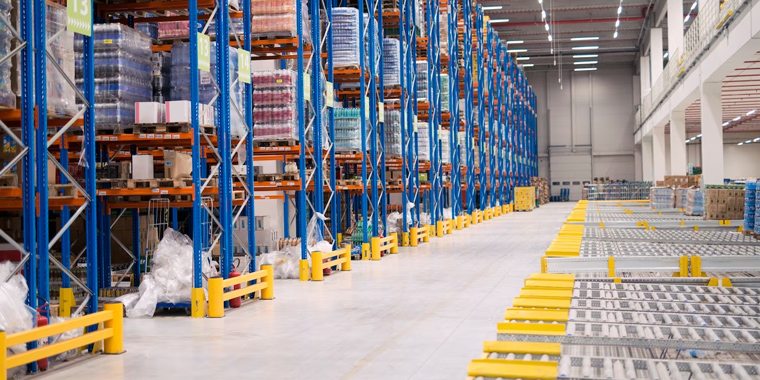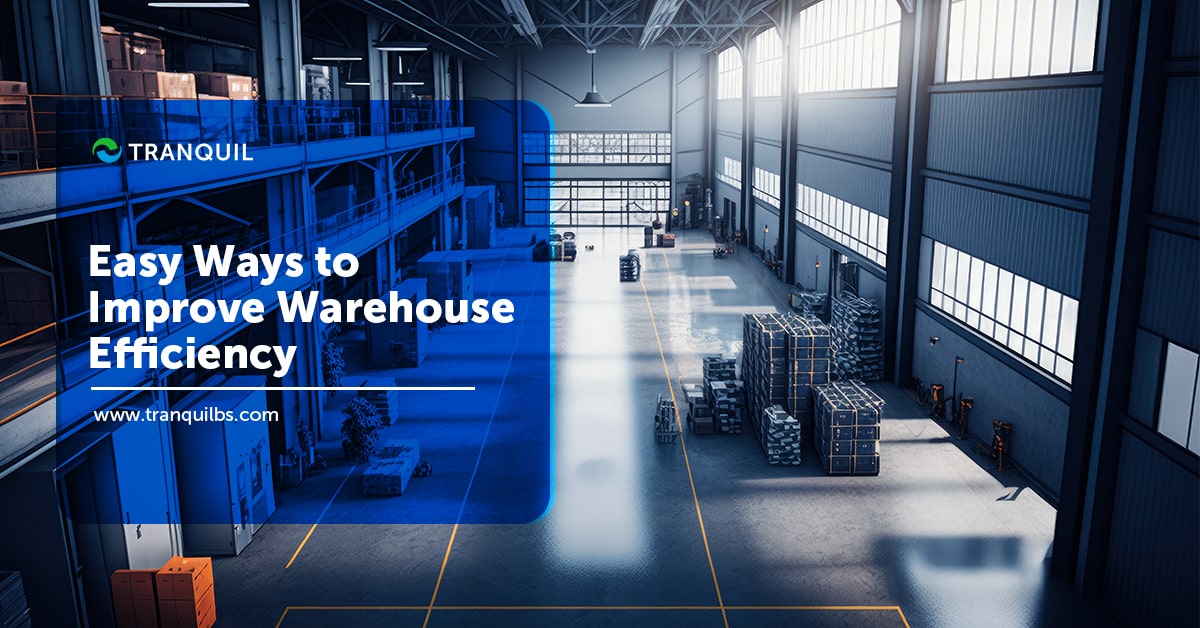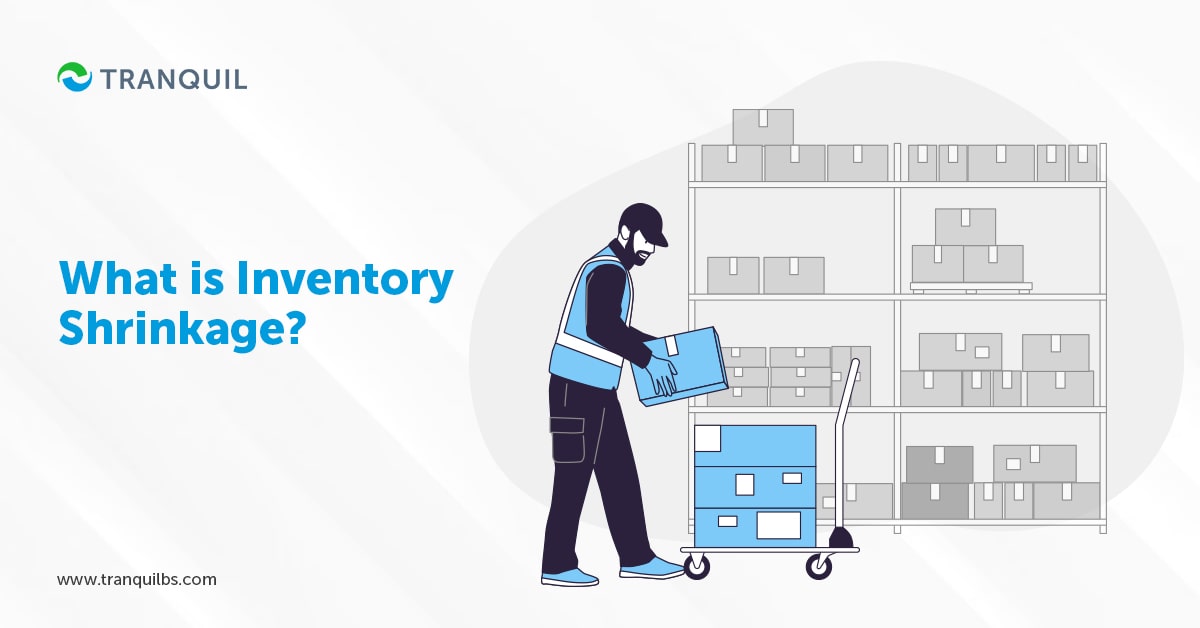
How to Organize Your Warehouse? Tips to Know
It is absolutely essential for any individual or company to be organized if they want to be successful.
Any business that deals in products is likely to have one or more warehouses, depending on the size of the business.
The warehouse is a critical part of your business, and it is imperative that it is organized to optimize space, and ensure speedy operations.
Remember that keeping your warehouse organized is not a one-and-done thing – it’s an ongoing process.
There are literally dozens of things you can do, and keep doing, to ensure that your warehouse is not chaotic.
We have some warehouse organization tips for you, and they belong to three main categories:
- Clean Workspaces
- Inventory Organization/Management
- Warehouse Layout
By no means is this the final word – there are likely to be other ways to keep your warehouse organized. But you can use this to start off.
ALSO READ: Warehousing Trends in 2023
Clean Workspaces

It’s said that cleanliness is next to godliness.
A neat and clean workplace helps prevent inventory damage, injury to workers, and increases productivity and efficiency.
Clean Regularly
It is essential that you keep your warehouse free of dust and dirt, and make sure to clean up spills safely and immediately.
It will not only keep your workers safe; it will protect your equipment and inventory from damage too.
You can either a cleaning service to do the job, or assign cleaning duties in rotation to your employees via a checklist to be carried out when their shift ends.
ALSO READ: Common Inventory Management Problems and Solutions
Train Employees
Your employees should be properly trained in maintaining the warehouse in an organized manner.
Define expectations, and carry out checks to see that it is being followed.
Conduct Regular Maintenance
Adhering to manufacturers’ recommended maintenance schedules is in everyone’s best interests; you must prioritize the maintenance of your equipment, as it keeps your facility in working order and eliminates unexpected downtime.
Operational equipment ensures employee productivity.
ALSO READ: Benefits of Having an Employee Self Service System
Keep Aisles clear
Every warehouse has moving parts – even organized ones.
It is important that your aisles are free of any clutter, and clear enough to let forklifts and other vehicles move without hassles, and keep your workers safe.
Remember however, that you should not waste precious floor space; allow forklifts to travel by optimizing aisle space, and reducing clutter.
This will also let you access stored products easily.
Warehouse Layout

Your warehouse layout is probably the most important factor to consider when we talk about warehouse organization ideas.
Overhauling it completely can be very daunting – but even optimizing a few things in your current system and processes can help boost efficiency and speed.
ALSO READ: Key Advantages of Field Service Software
Organize Floor Plan for Optimal Process Flow
If you thought about having a well-organized warehouse in the early stages – during design, then it’s great, as you can get the right start!
If not, you can slowly change things one at a time, and set this is a long-term goal that needs continuous work; assuming of course, that the process flow in your warehouse is far from ideal.
The warehouse layout should be such that it offers a safe environment for your employees, and allows them to be efficient and productive.
The flow should be logical, and set up in the same order as that of the operations.
Like, inventory is first received, and then stored as per the method followed in the warehouse; when orders are received, the products are picked, then packed, and sent to shipping, and finally sent out.
The layout must be such that it makes this flow smooth.
You can take feedback from your employees, and ask them if any specific areas of the warehouse can be altered in any way to make things easier for them.
Encourage your employees to be part of process improvement.
ALSO READ: ERP vs CRM
Use Appropriate Labels and Signage
This is not optional; it is absolutely essential.
Label your inventory and working zones across the warehouse, and you will be able to ensure smooth flow for the long term, in addition to keeping the warehouse organized.
After the layout is established, the labels and signage will help workers to find things easily, and know where everything belongs.
New and temporary hires will find this especially useful.
Be sure to also label any restrictions and hazards prominently to boost employee safety.
Whenever necessary, make sure to replace labels and signs to avoid misplacing inventory and other errors.
Provide Maps
If your warehouses are huge, provide maps to your employees, which will make it easy for them to navigate quickly and easily.
The quicker workers can reach where they need to, the faster they can complete the job.
ALSO READ: What is Asset Tagging?
Evaluate Storage Capacity
Now you have a place for everything and have labeled everything, you need to assess your storage capacity – meaning, the maximum quantity of inventory that can be held in your warehouse.
There’s a simple formula for this: height x depth x breadth = storage capacity.
Remember that even vertical space can be used, so don’t waste that space.
Inventory Management

By inventory management, we are talking about everything that is physically present in your warehouse.
You need a robust system to track your inventory, so that your workers can do their jobs efficiently.
You can classify inventory and store it properly, maximizing your existing capacity, and even free up space that was being used wastefully, to enhance storage and boost efficiency.
ALSO READ: Benefits of ERP- IoT Integration
Inventory Classification
This should be your first step; when you classify inventory properly, you will be able to organize and store products according to the rate at which they sell.
You can use data to profile your SKUs appropriately.
Take stock of your current inventory – size, and shape in addition to quantity, and check the frequency of its picking.
Categorize your inventory into fast, medium, slow, and very slow-moving items.
Then, do a cross-check of your documented SKU velocity against the picking time for the same, and you have your inventory picking cost.
By applying the 80/20 rule, you know that 20% of your inventory gets picked 80% of the time.
However, if you only focus on that 20%, you end up ignoring opportunities to improve the rest of your inventory.
Ergo, you need to look at your SKU profiling and inventory classification very seriously.
Compartmentalize Inventory
Storage devices like racks, bins, totes, etc. help you to organize even the tiniest item – whether it is screws, needles, or socks.
These can be easily stored in bins and labeled for clarity.
Dividers can be used within bins to separate the same item based on size, color, or more.
ALSO READ: What is Demand Forecasting?
Implement a Slotting Strategy

After classifying, compartmentalizing, and labeling inventory, you can slot it, and see how much faster your employees pick products.
Carry out slotting by velocity first; during inventory classification, you identified your fast and medium-moving gods are along with your slow and very slow-moving items.
It makes sense to slot your A and B or fast and medium moving items into areas that are easiest to access.
You can place the C and D items in the not-so accessible areas, and it won’t hamper your speed or productivity.
By reducing the distances between the A and B products to the shipping zone, you automatically reduce employee fatigue, and increase speed of shipping.
Based on size, shape and weight of inventory, you can slot your SKUs by technology or zone – heavier items closer to the shipping area, for example.
Of course, there might be a little conflict of interests here, and you will need to put a lot of thought into your slotting process.
Set up an Efficient Receiving Process
You simply cannot have boxes piled up near your receiving area!
Inventory coming in is as important as what you are sending out.
Assign a worker to manage the receipt of inventory properly; they need to check that the inventory received was in good condition and that the quantity was correct, and accordingly process the shipment.
They must direct other workers to store the inventory items according to the storage system you follow.
ALSO READ: ERP Configuration vs. ERP Customization
Improved Returns Handling Procedures
This is another thing to think about.
Clearly define every step of the returns handling so that employees take proper care of returned products.
After all, if goods returned are misplaced, it’s a loss for you.
With a well-documented returns process you can enhance overall warehouse efficiency.
Automate Storage
Automation is a sure-fire way to maximize your storage space.
Of course, there are numerous methods of storage you can choose from; you can consult an expert to check if your current system can be improved.
As we mentioned before, most warehouse managers forget about the huge vertical space available for storage, and it often goes unused.
By using tall racks, you can efficiently utilize this space and maximize your warehouse storage.
ALSO READ: Why is Cloud Storage Better than Local Storage?
Lean Inventory
You can follow the just-in-time inventory approach, and maintain lean inventory – less inventory, less effort to organize it!
Store only what is essential to prevent stockouts and avoid over-stocking too.
Having less inventory on hand will allow your warehouse to be highly efficient, and deliver outstanding customer service.
Organize Safety Stock
We just mentioned lean inventory, but it’s also essential to have a buffer to accommodate sudden spikes in demand, or delays in getting replenishments from vendors.
Mark an area to store this safety stock so that it doesn’t get used in the normal course, or get displaced.
ALSO READ: Importance and Calculation of Safety Stock
Implement Cycle Counting
There’s nothing more tedious and time-consuming than the annual process of counting inventory at financial year-end.
However, if you perform cycle counts – monthly, quarterly, or even weekly, and keep track of inventory across the whole year, you need not undertake this annual count.
Cycle counting is efficient, and helps in maintaining accurate levels of inventory, saving you time and money.
Adopt a Warehouse Management System
A warehouse management system is software that can streamline and automate most of the warehouse activities, and also support most of the ideas we have mentioned above.
It will make profiling, classification, slotting, inventory tracking, and many other tasks easy and quick.
Final Thoughts
Implementing a robust and reliable solution like Tranquil will support you substantially to ensure that your warehouse is organized and efficient; it will provide you with vast amounts of data which will be invaluable in the future, when you can use it to further improve warehouse functionality.
Tranquil offers real-time visibility into inventory, assets, and more, delivering valuable insights that helps you take informed decisions for business growth. Schedule a FREE demo at your convenience to know more.



